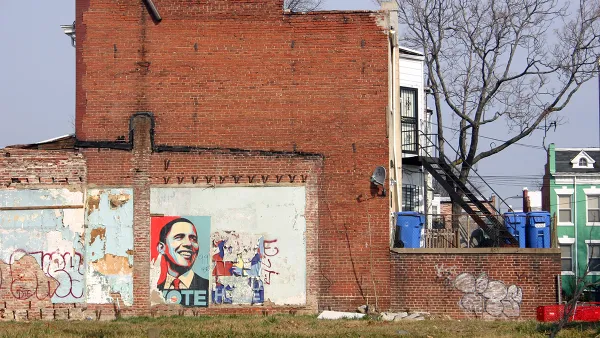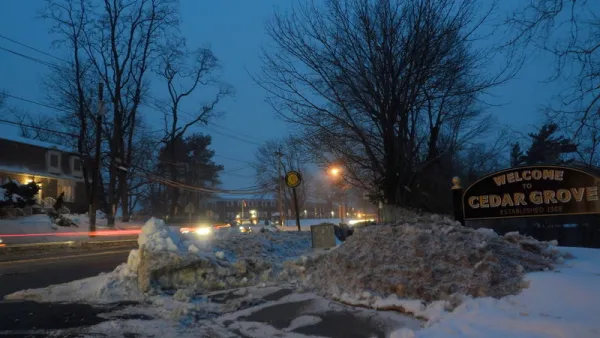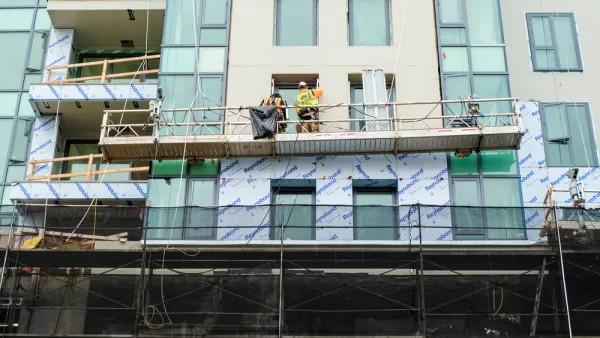As public art proliferates as a strategy to engage disaffected youth and enliven neighborhoods, Philip Langdon argues that an additional standard must be considered when evaluating such projects -- their content.
Langdon's commentary was spurred by recent discussions held at an urban journalists' forum organized by the Lincoln Institute of Land Policy, and more specifically by images of public murals shown by Roger Cummings, co-founder and artistic director of Juxtaposition Arts, an arts-oriented community development corporation in Minneapolis. Some of the murals shown in Cummings' presentation depicted images Langdon considered disturbing: "a huge painting of a man pointing what appeared to be a weapon toward a plaza; representations of guns and skulls; symbols of death."
These images, and responses from forum attendees such as Alex Marshall, who writes for the Regional Plan Association in New York, has Langdon arguing that "The fundamental problem is that public art does not always make a place better."
"Marshall suggested that an in-your-face kind of art may degrade public space. In a city, things that are painted on surfaces visible to everyone greatly affect people's thoughts, moods, outlooks. He likened an aggressive mural on the exterior of a conspicuous building to letting someone paint a disturbing scene on your living room wall."
Langdon continues, "In these financially pressed days, when those who want to improve a city often have to do so with limited resources, there's a danger of driving a needed restraint or subtlety out of our shared living rooms. A respect for the sensibilities of others is one of the things that makes living in dense agglomerations palatable; there's a problem when public art forgets that."
Join in the already spirited debate about Langdon's argument in the comments section of the article.
FULL STORY: When public art disturbs its viewers

Analysis: Cybertruck Fatality Rate Far Exceeds That of Ford Pinto
The Tesla Cybertruck was recalled seven times last year.

National Parks Layoffs Will Cause Communities to Lose Billions
Thousands of essential park workers were laid off this week, just before the busy spring break season.

Retro-silient?: America’s First “Eco-burb,” The Woodlands Turns 50
A master-planned community north of Houston offers lessons on green infrastructure and resilient design, but falls short of its founder’s lofty affordability and walkability goals.

Test News Post 1
This is a summary

Analysis: Cybertruck Fatality Rate Far Exceeds That of Ford Pinto
The Tesla Cybertruck was recalled seven times last year.

Test News Headline 46
Test for the image on the front page.
Urban Design for Planners 1: Software Tools
This six-course series explores essential urban design concepts using open source software and equips planners with the tools they need to participate fully in the urban design process.
Planning for Universal Design
Learn the tools for implementing Universal Design in planning regulations.
EMC Planning Group, Inc.
Planetizen
Planetizen
Mpact (formerly Rail~Volution)
Great Falls Development Authority, Inc.
HUDs Office of Policy Development and Research
NYU Wagner Graduate School of Public Service




























